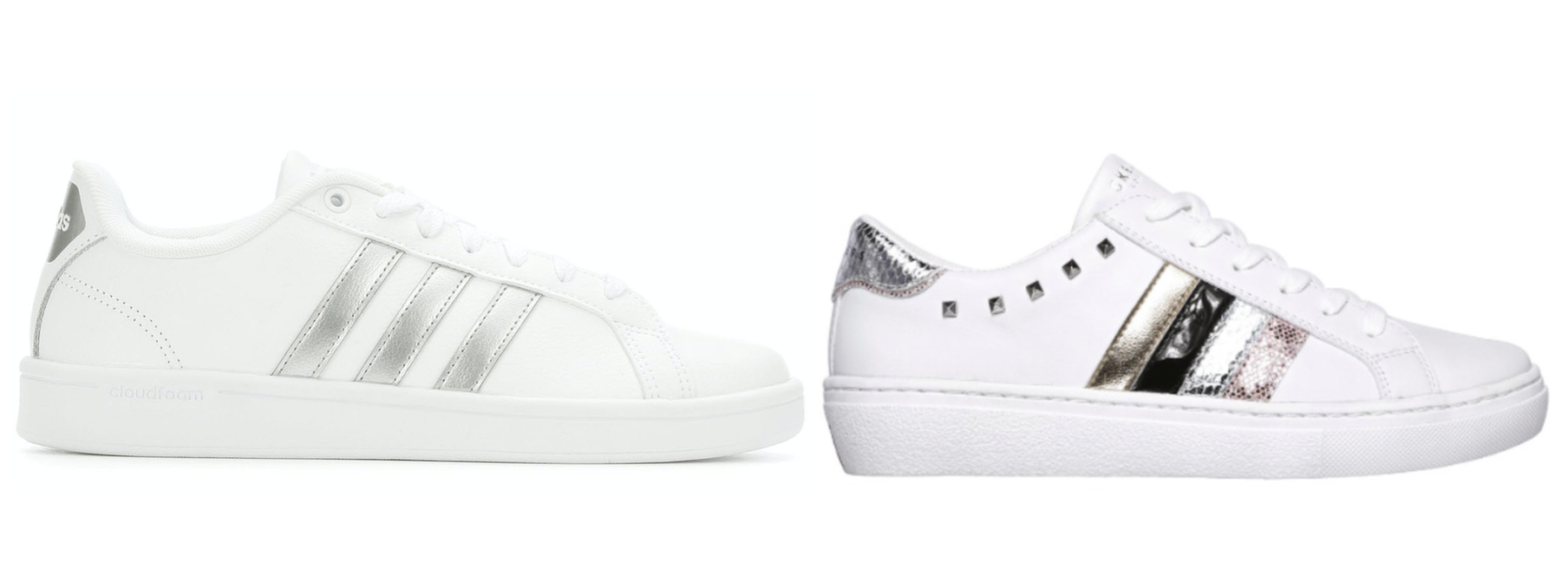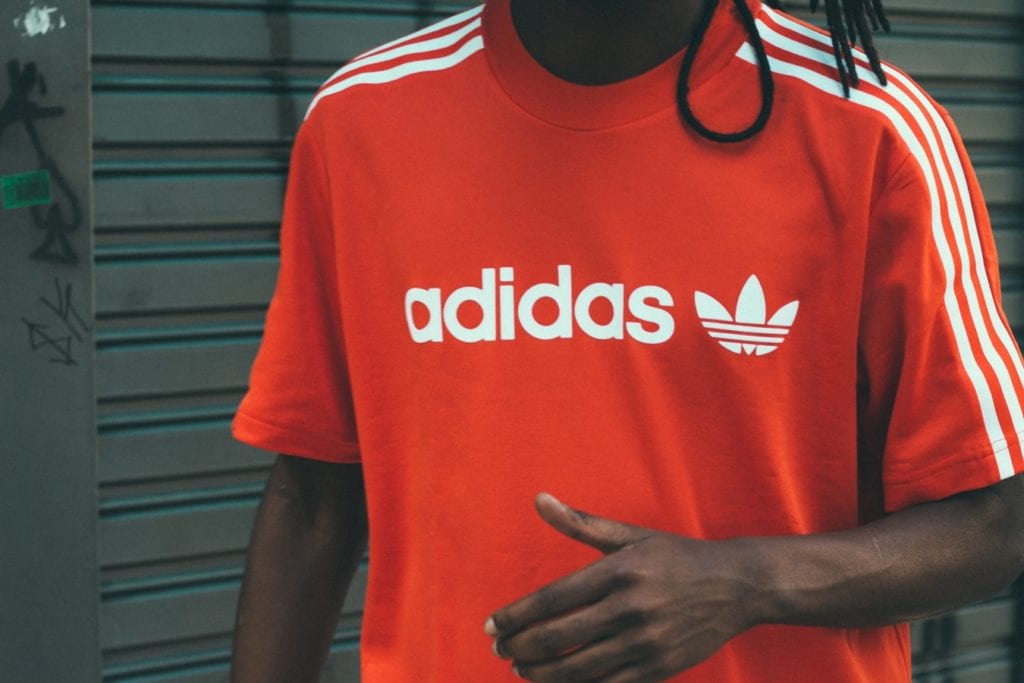Adidas and Skechers have ironed out their issues when it comes to the latter’s 4-stripe Goldie-Peaks sneaker. After five months of arbitration, Skechers formally requested that the U.S. District Court for the Central District of California dismiss the case that it filed against its German rival back in February, bringing to an end the latest clash between these two footwear giants and to adidas’ latest fight over stripes in a larger, nearly constant war.
In February, Skechers filed suit against adidas after receiving two cease and desist letters from the notoriously litigious sportswear brand, in which adidas claimed that Skechers’ Goldie-Peaks Shoe “infringes and dilutes” its famous 3-stripe trademark. To be exact, adidas asserted in its letters that the “overall commercial impression” of the Goldie-Peaks shoe “is sufficiently similar to [its] 3-stripe” trademark-bearing shoes, and as a result, is likely to confuse consumers into believing that the Skechers shoe “is put out by, or with sponsorship or approval of, adidas.”
Skechers – which argued that the protection that adidas’ maintains in its 3-stripe mark is “narrow” since the footwear and apparel industries are a “crowded field of stripe designs” – asked the court to declare that despite adidas’ claims of infringement and dilution, it is not running afoul of adidas’ 3-stripe trademark by way of its 4-stripe shoe. And in an attempt to bolster its non-infringement argument, Skechers noted the widespread market presence of sneakers being of multiple stripes , ang pointed to sneakers from Miu Miu, Gucci, Paul Smith, DVF, Steve Madden, Tommy Hilfiger, Tory Burch, and Marc Jacobs, which was sued by adidas in 2015, among others as evidence.
The confidential settlement – which follows from adidas’ bid for arbitration, one that Skechers consented to shortly after filing suit – marks the latest completion in a long list of cases initiated by adidas (either directly or otherwise). While trademark spats are common in the retail sphere, adidas’ litigious tendencies have earned it something of a complicated reputation amongst its competitors and many intellectual property lawyers, alike, which have gone so far as to label the German sportswear giant a “bully” in connection with its quest to consistently push the envelope in terms of the breadth of its 3-stripe trademark protections.
 adidas Superstar (left) & Skechers’ Goldie-Peaks sneaker (right)
adidas Superstar (left) & Skechers’ Goldie-Peaks sneaker (right)
Adidas – which maintains rights in its three-stripe mark in a number of ways, across a wide array of goods and services – is in an interesting position as the holder of a famous and sweeping trademark, one that appears on nearly every product it makes in some form or other.
As the trademark holder, it has the duty to ensure that others are not infringing its and chipping away it’s the distinctiveness that enable consumers to see the three stripes and immediately call to mind the adidas brand.
The problem, as Craig Whitney, a trademark lawyer at Frankfurt Kurnit Klein and Selz told Bloomberg back in 2017, is that adidas striped mark “can appear in so many different ways, even accidentally with someone having no intention of trading off of adidas’s mark.” With that in mind, adidas has “been put in a position where they have to police [others’ use of the mark] even harder.” This is compounded by the fact that trademark infringement does not only apply to instances when a trademark is replicated exactly on similar goods, and thus, likely to result in consumer confusion, it is also commonly cited when a slightly different – but “confusingly similar” – trademark is used.
For adidas, this has included the use of 2-stripe trademarks and 4-stripe trademarks on everything from sneakers (as we saw in the last adidas v. Skechers case) to 5 perforated stripes, which were at the center of the 2018 fight between adidas and Skechers over a different pair of Skechers-made adidas lookalike shoes. Still yet, in addition to traditional competitors, adidas’ trademark enforcement quest has caught others in its web, such as Elon Musk’s Tesla.
“Unlike the Nike Swoosh or Louis Vuitton’s famous LV print, the adidas mark is so simple that it can lose its strength if there are too many similar patterns out there,” said Whitney. “The more stripe designs on the market, the less distinctive adidas’ [wildly valuable trademark] becomes,” and therein lies the need to ensure that others are not using it without the brand’s authorization.
But not everyone is in agreement about the nature of adidas’ trademark enforcement marathon. Forever 21, for one, echoed a larger sentiment held by many in the trademark community when it sought court intervention in March 2017, crying, “enough is enough.”
In response to the litigation that adidas initiated against it, Forever 21 filed a countersuit, claiming that “since 2006, adidas has commenced a pattern of complaining about striped apparel sold by Forever 21, and it has steadfastly increased its threats to encompass virtually any item of clothing with decorative stripes.”
Forever 21 asserted that adidas’ trademark litigation spree is born from the fact that “years ago, adidas managed to secure federal trademark registrations for use of three, parallel stripes placed in specific locations on certain shoes and clothing,” which the German giant has used to “aggressively enforce … against others, suing and threatening suit against retailers and manufacturers of footwear and clothing who use three stripes in a manner that adidas believes is likely to cause confusion … taking its claims even further—too far—[by] essentially asserting that no item of clothing can have any number of stripes in any location without infringing adidas’s trademarks.”
Finally, the fast fashion company stated that it is “tired of operating with a cloud over its head with regard to its right to design and sell clothing items bearing ornamental/decorative stripes, and unwilling to stop doing something it has every right to do and pay a bully to leave it alone.”
That case ultimately settled out of court ahead of trial, and adidas has stayed its course in terms of enforcing its rights in its stripes marks, which are at the center of its $25 billion-in-sales per year sportswear empire. And as counsel for adidas has told TFL in the past, it is “vigorously protecting [its] rights,” and that it will, in fact, “continue to take action in case of infringements.”











